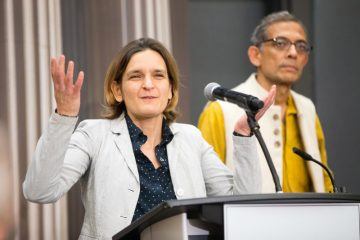
Sanjay G. Reddy in Foreign Policy:
RCTs cannot reveal very much about causal processes since at their core they are designed to determine whether something has an effect, not how. The randomistas have attempted to deal with this charge by designing studies to interpret whether variations in the treatment have different effects, but this requires a prior conception of what the causal mechanisms are. The lack of understanding of causation can limit the value of any insights derived from RCTs in understanding economic life or in designing further policies and interventions. Ultimately, the randomistas tested what they thought was worth testing, and this revealed their own preoccupations and suppositions, contrary to the notion that they spent countless hours listening to and in close contact with the poor. It is not surprising that economists doing RCTs have therefore been centrally concerned with the effects of incentives on individual behavior—for instance, examining the idea that contract teachers who fear losing their jobs will be more effective than those with a guarantee of employment.
But valuable innovations in everyday life, whether on the small or large scale, are likely to result from explorations of a more open-ended kind. This requires that people experiment with the institutions of which they are a part, which is not the same as conducting randomized experiments on other people. Policies (and reforms of policies) that go beyond one dimension are essential in a complex environment. For instance, better schools are likely to result both from measures dealing with teachers’ employment and ones dealing with curriculum, community participation, and funding arrangements. RCTs simply cannot advise us on how best to combine all of these, let alone on how to think creatively about them. Better schools may also result from changes that result from improvements in other domains beyond the individual school—for instance, safer neighborhoods, better drug policy, or lessened poverty. The actions needed to achieve better outcomes may sometimes only be possible to undertake at a level going much beyond the locality. A good example is provided by the iodization of salt, which has contributed not only to better health but may also have improved educational outcomes.
More here.
